Each generation’s favorite classic cars
Want to know something kids today can’t get enough of? Dogs. Especially really cute ones with sad eyes. Gen-Zers are also into—get this—hot drinks on cold days. Some like cilantro, but others hate it. Spend enough time on TikTok and you’ll get the sense that many teens—gosh, this is so weird—crave the approval and affection of others.
OK, I’ll stop. My point, in case all that wasn’t obvious enough, is that lots of people tend to be into lots of the same stuff, regardless of age. The ballyhooed “generation gap,” although grounded in certain realities of our fast-changing world, is largely a figment of marketers’ imagination.
Hagerty’s demographic data tell a similar story. When someone calls us about insurance on a particular car, we ask for basic details like their age. Since we get thousands upon thousands of these calls every year, we have a pretty solid sense of what enthusiasts in each age group are into. Turns out that whether the caller is 16 or 101 (actual ages of our youngest and oldest callers) there’s a really good chance they’re asking about a Chevrolet Corvette or Ford Mustang.
Of course, there are differences, and we’ll get into some of them below. In the interest of presenting a fuller picture, I’ve shown two metrics for each generation—first, the vehicles that age group calls about the most, and second, the cars for which it represents the highest percentage of interest. The latter metric helps us spot trends early on but it also, in isolation, can be very deceiving. For instance, looking solely at generational share, you’ll see that Gen-Z represents 44 percent of insurance quotes for the 1989–1994 Nissan Laurel. Woah! Before you start filling warehouses with the JDM sedans, though, perhaps I should tell you the raw total of calls that represents: 24. In contrast, some five thousand kiddos called us about Mustangs. (Note: In the interest of avoiding such misrepresentations, I have in the sections below excluded vehicles for which we received fewer than 100 calls from a particular age group.)
Read on to see what each generation craves, but don’t forget the key takeaway: What we share in common far outweighs what separates us.
Pre-baby boomer (1920–1945)
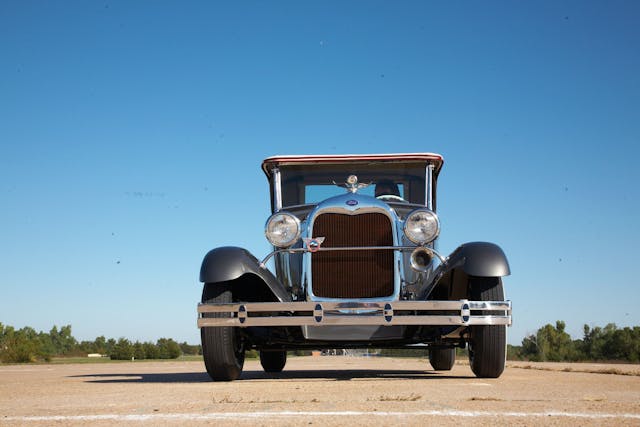
Most-called-about vehicle: 1928–1931 Ford Model A
Highest share of calls: 1950-1953 MG TD
These shouldn’t surprise anyone. Not only are both cars, um, old, but they’re also the two archetypes of the attainable classics favored by younger generations. In the Ford Model A, we have a passenger car that, due to its ubiquity, charisma, and association with a time and a place, found its way into enthusiasts’ hearts. The MG TD, meanwhile, was the sports car that made Americans love sports cars—every Corvette, Miata, and Boxster produced owes it a small debt.
On that note, we all owe a debt to these older collectors. They founded the car-collector hobby and, to a large extent, created car culture as we know it in this country. The greasers who popularized hot rodding, the tweed-wearing East Coasters who brought over British roadsters, our pantheon of American racing greats, including Phil Hill, Carroll Shelby, Dan Gurney, and Mario Andretti—all of them hail from the generation born before 1945, and all continue to resonate today.
This generation also continues to throw a lot of weight around the collector car market. Although its ranks, sadly, are thinning, pre-baby boomers are still more numerous in our insurance quote data than Gen-Zers, and they’re overrepresented among the most expensive vehicles.
Baby boomers (1946–1964)
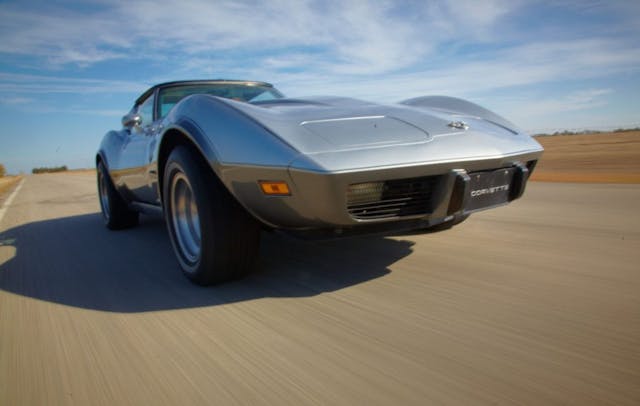
Most called-about vehicle: 1972–1984 Chevrolet Corvette
Highest share of calls: 1969-1976 Triumph TR6
If you’re reading this article, based on our stats, you’re likely a baby boomer. For all the obsession with the growing youth contingent, baby boomers still represent the lion’s share of interest in cars: Nearly four out of every ten people who called Hagerty for a quote on insurance in the past year come from that generation. This is to a large extent a by-product of wealth—baby boomers control more than 50 percent of it in the United States, per the Federal Reserve—yet there’s no denying that the generation which came of age in the 1960s has a unique connection to the automobile.
When it comes to what these enthusiasts crave most, there’s no contest. It’s all about Corvette. The most-produced Vette, the 1972–1984 C3, naturally tops the list, but the C2, C4, and C5 all make the top ten.
What sets American baby boomer enthusiasts apart, however, is their fascination with British sports cars. The folks who grew up with The Beatles, the Rolling Stones, and The Who have a special relationship with the cars from that country. Four out of the ten cars for which Baby Boomers represent the highest share of insurance quotes are Brits, topped by the venerable Triumph TR6.
Generation-X (1965–1981)
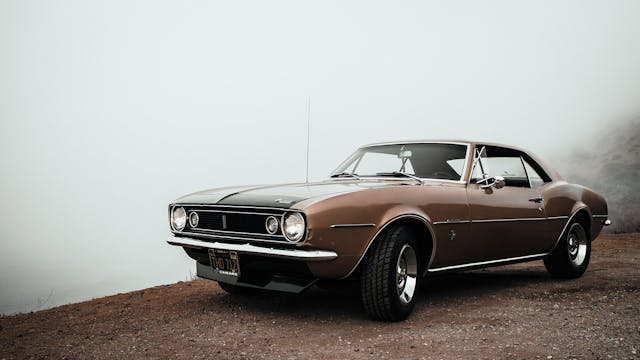
Most called-about vehicle: 1967–1969 Chevrolet Camaro
Highest share of calls: 1983–1990 Land Rover Defender
Gen-Xers are, in the near term, the most important age group for classic car values. That may sound odd given that they are commonly thought to be America’s smallest generation, sandwiched between baby boomers and their millennial children. Yet in terms of wealth and disposable income, Gen-Xers punch well above their weight. Most of these forty- and fifty-somethings are in their peak earning years, and many are finally getting the kids off their dole. As a result, the cars for which this age group is over-represented are gaining in value. It’s no surprise then, that classic SUVs—the hottest segment of the collector car market right in recent years—dominate the list of vehicles Gen-Xers favor compared to other generations.
Conversely, though, it is Gen-Xers who really start to bust conventions of what enthusiasts of a particular age “should” like. Look at the vehicles they call about most, and you essentially see cars from the same era as the one prized by baby boomers. Topping the list is the 1967–69 Camaro, a car that even the oldest Gen-Xers likely don’t remember seeing new, and one that Baby Boomers also like a whole lot.
Millennials (1982–1996)
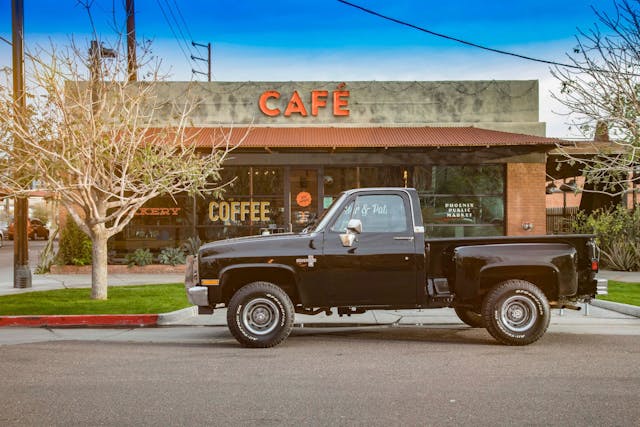
Most called-about vehicle: 1981-1987 Chevrolet C/K Series Pickup
Highest share of calls: 2002-2007 Mitsubishi Lancer/Evo
Time for some myth-busting. Millennials, the ones who grew up during the golden era of Japanese performance and were the core audience for the Fast and Furious films, are absolutely bonkers for American cars. The ten cars quoted most by this generation are all Fords and Chevys. Matter of fact, the Miata, the 3 Series, and the venerable Beetle are the only imports the crack Millennials top 25—otherwise, it’s wall-to-wall Detroit.
The list of cars quoted most exclusively by millennials probably hews closer to what you might expect—Evos, STis, Skylines. Yet here’s where the data can become deceptive. Remember that this young group of collectors, though it is growing by leaps and bounds, still represents a smaller slice of the pie than their elders. That means Gen-Xers and Baby Boomers tend to crowd them out, percentage-wise, on American classics. For instance, the most popular car for millennials’ by total quotes is the 1980s Chevy C/K. Yet millennials represent only a fifth of the interest in the truck. Meanwhile, the car for which millennials represent the biggest proportion of quotes, the 2002–2007 Evo, actually isn’t all that popular—only 153 millennials called us about them. In other words, a high percentage of millennial interest in a car usually tells us more about a lack of interest from older collectors.
That doesn’t mean those Japanese classics don’t have a bright future. We expect that as the numbers of millennial collectors swell, so too will interest in and values for cars they and they alone love. But make no mistake: the Vettes, Mustangs, and pickups currently hoarded by older generations will almost certainly remain more popular.
Gen-Z (1995–2012)
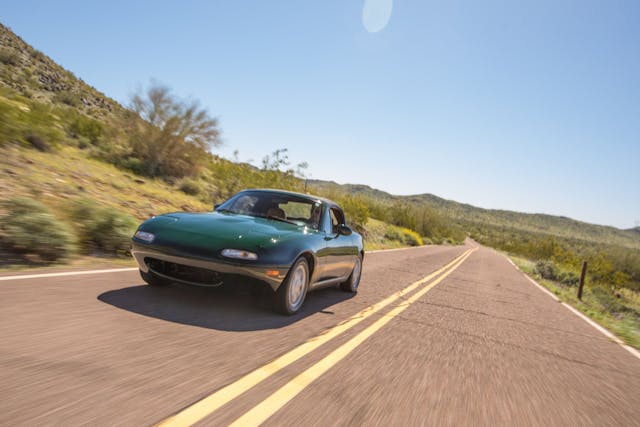
Most called-about vehicle: 1989–1997 Mazda Miata
Highest share of calls: 1988-1994 Nissan Silvia S13
To the extent that Gen-Z represents the exception here—the only generation that quotes a modern Japanese car more than any other—it also proves the rule. Because the car happens to be none other than the first-generation Miata, a modern Japanese car performing a spot-on impression of an older British roadster.
The vehicles Gen-Z quotes more than other generations is without a doubt the most eclectic grouping here. More so than for Millennials, the list seems to represent genuine interest from this age group rather than just apathy from older collectors. Note, for instance, that the Miata makes the cut here, as well. Dealers and auction companies who wish to be relevant a decade or two from now might start beefing up on their knowledge of the JDM heroes on this list. That said, they also should stay current on Corvettes and Mustangs because—you guessed it—the youngest set of collectors also loves those.
Check out the Hagerty Media homepage so you don’t miss a single story, or better yet, bookmark us.
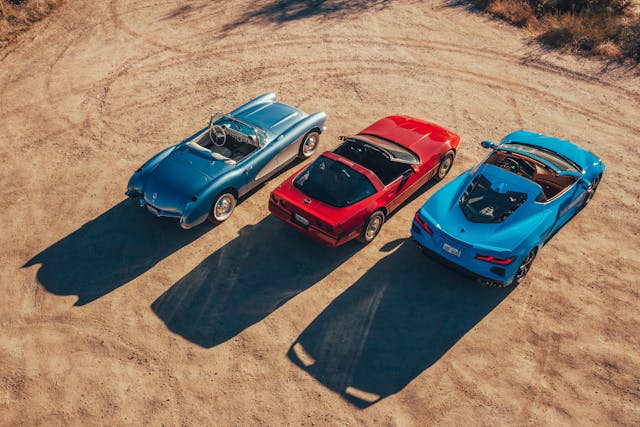
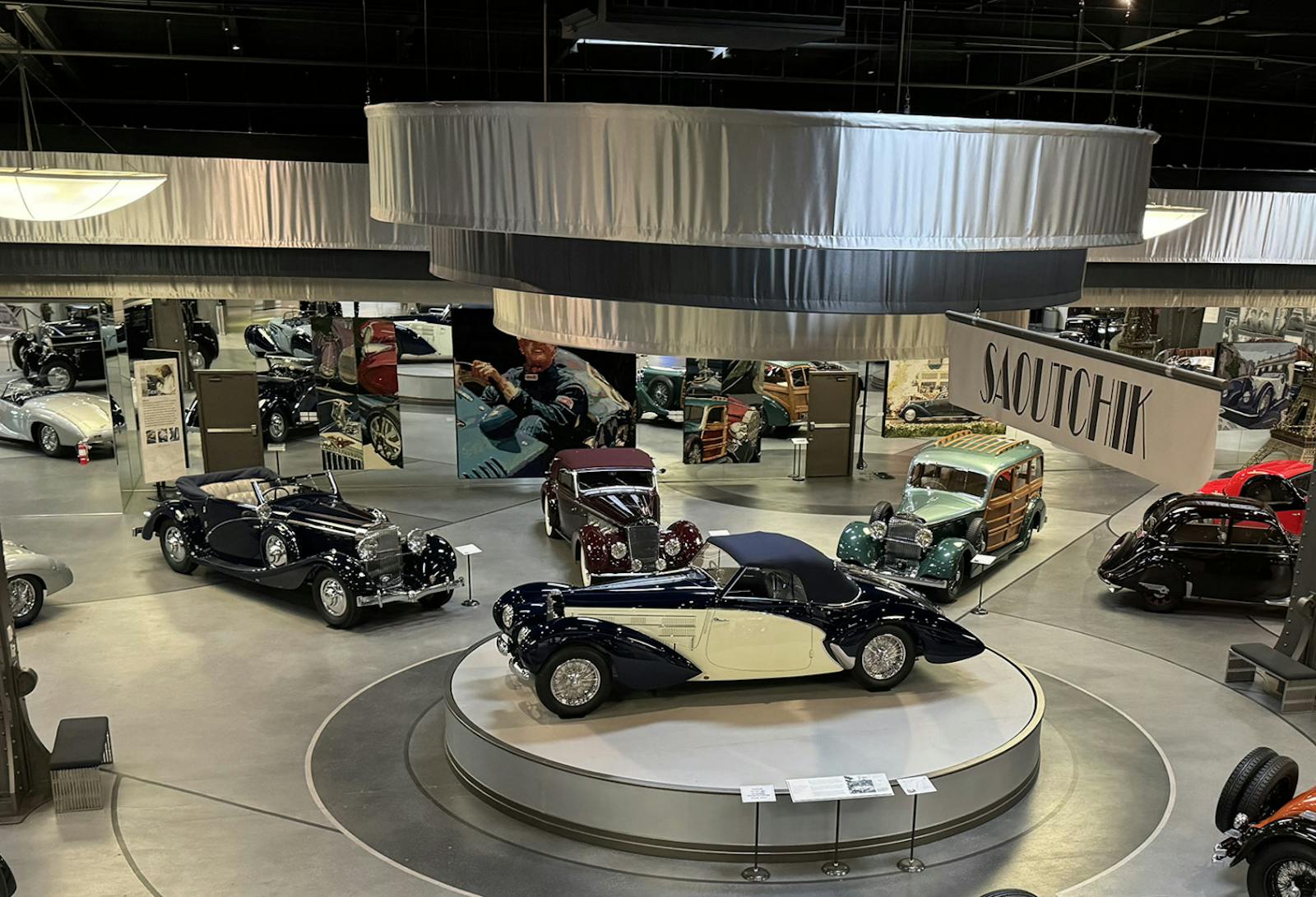

And here I figured generation Z would be most interested in bicycles, electric scooters and skate boards
The thing is, a TRUE car nut can appreciate all cars from the brass cars of the 1910’s all the way to today. Four door, two door, coupe, wagon, truck, whatever. We all have our favorites based on what our parents might have had while we were growing up, what we had in high school or the first ‘classic’ car we could afford when we got some extra $ scraped together. We have to keep the next generation interested in all types because they are the ones who will inherit or buy our cars when we are gone.
Interestingly, as a C4 owner, the oft-maligned 4th generation Corvette made every generations top 10 list but for the millennials. I wonder how far down the list the C4 was for the millennials. Possibly not too far out of the top 10.
Aahhh, you forgot the poor folks Porsche….the 1960-1969 Chevy Corvair! Especially the 1965-69 model’s
Can you please driil down a little more on the difference between “most interested in” and “highest share of interest” ? They seem the same to me, but statistics was never my strong point.
Thanks
I wonder if there is a correlation between age and whether you grew up with pre-smog controlled carbs and points versus electronically self regulating chip-laden “modern” cars?
I’m 84 and my first car was a 1930 Model A Ford Cabrolet. Some of the kids at school would stand in line to try to “Crank it”, (if my battery had a dead cell,) I’ve had so many different cars thru the years, mostly fords, but enjoyed coming up in the days of the first Hot Rod magazine, etc. One of my friends went to school with Mario Andretti in Nazareth, Pa. Truly the “Good Old Days”.
No 1970-1981 Pontiac Firebird?!
What? No ‘50’s/60’s Detroit iron? How can that be??
As a baby boomer I thought most boomers would center on 55 through 65 Fords and Chevys!
Surprised no VW beetles. The 1995-2012 nailed it with my daughter (1999) with the Miata. She will inherit my 1990 Miata.
So I’m a 66 year old Gen Z with my 1991 Miata and most of what I “should” be interested in sparking no desire? Numbers are wonderful things and very useful but people seldom fit into spreadsheets.
At 66 you are a Boomer
They do fit into spreadsheets if you’re an insurance company trying to determine stated value for policies while appealing to the mainstream with fluff like this, press releases, auction hype, thrice told tales with only a few articles on interesting old cars for a veneer of seriousness so the mainstream better able to imagine themselves knowing buffs.
All the Ford and Chevy guys must have been home when this survey was done , and the Mopar guys were out enjoying their rides.
This list makes very little sense. I don’t really see a correlation between generations and the vehicles listed! The so-called Boomer choice, for example, is from a time period that any boomer would know was an enthusiast wasteland due to emissions restrictions. Those cars absolutely sucked.
Keith Beachy, your comment would only be valid if we lived in a world where no one is allowed to modify a car. Take the anemic 1970’s Corvettes with 165 HP, everyone who bought a C3 Corvette removed the cats and added a cam….most now have 300+ HP and are fun as hell to drive…I should know, I have two of em.
I am thinking that too, Mopar is highest on the list for me,
I would be interested in seeing a chart of the total number of cars by model / year that are insured.
I think some of the 65 /66 mustang levels of interest is because so many were made.
This constant stream of “most popular” underscores laziness, and that Hagerty is trying to determine stated value insurance policies.
No correlation ‘twixt age and interests, if a thinking autoholic. Plenty of “boomers” prefer the “it cars” of the War II generation. In high school in the late ’60s, we laughed at muscle cars, thought them dumb, lame, still do; mainly noticed old sports cars; big Healeys, Jags, bathtub Porsche, or watched the Avengers to see Steed’s Cricklewood Bentley as much as Diana Rigg.
Some of the most avid, enthused members of the HCCA (Horseless Carriage Club of America, pre-1916 brass era) are 20-somethings, who get it all; the charm, nuance, craftsmanship,nascent engineering.
Could “articles” like the above be lazier, a better example of phoning it in, playing for sheer mainstream numbers? How can you go wrong with FordandChevyFordandChevyFordandChevy?
I prefer my girlfriend’s slick little Miata over anything on the road today, and a 62-year-old ’59 Pinanfarina coupe and ’63 Lusso Ferraris-owning friend laughs that my 20-year-old stick Civic will outperform either of his prancing horses, as well as an Austin Healey 100-6 or 3000. But that’s not why we own such cars as those, or prewar Packards, Buicks, or if you can find one, the best built GT of the ’50s, a Bristol. It’s c h a r m, what the English well described “the manner of its going.”
The two favorite marques of L.J.K. Setright, who knew what he was writing about, were Chrysler and Honda.
A vast gulf of time there.
I’m a 70 year old Millennial with my ’94 RX-7!